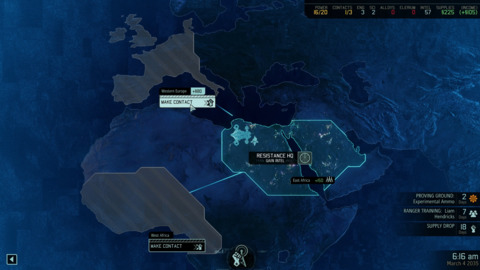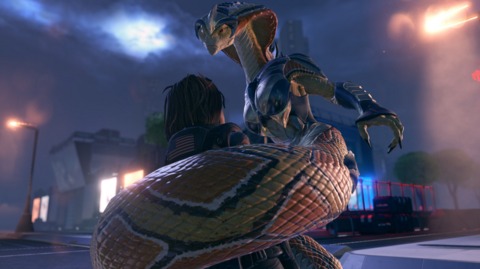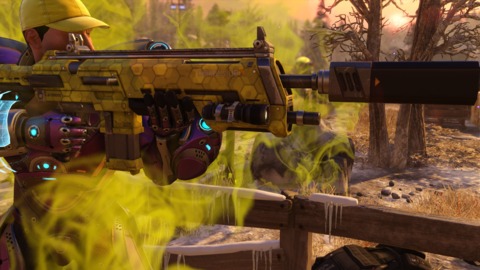XCOM 2 comes with two very different difficulties. I don’t mean that it has two different difficulty options when you start the game (it has four of those), but in terms of there being two different elements of the game that I struggled with. One was fully intended by the developers, involving intense, chess-like battles against an alien force. The other was with the game’s performance, in ways that Firaxis clearly did not intend. When everything is working as it should, XCOM 2 is a fantastic sequel that expands and improves on the original in several ways. When things are falling apart, it becomes a frustrating mess that made me want to quit and wait for a future patch. As it stands today, the quality of XCOM 2’s good elements made the game worth wading through some of its more infuriating problems.
Set 20 years after Enemy Unknown, XCOM 2 sees Earth being occupied by the alien force rather than invaded by it. They won the war, assumed power, and now hold the human race firmly under their control. A resistance of humans has taken up arms against the aliens, and the player assumes control of their faceless commander. Rather than playing defense against alien invaders like the last time, the sequel has you going on the offensive against alien oppressors. While this doesn’t drastically change the overall makeup of the game, it does have gameplay implications.

A metagame revolving around constructing a base and managing a world map is back, but in a different format. Instead of building a stationary base, XCOM 2’s home base is a captured enemy aircraft known as the Avenger. Without land to burrow into for expansion, you now add to your base by clearing out rooms of alien debris and repurposing them. It’s functionally similar to the last game, but the aesthetics of the metagame have been altered in a cool way to fit with the new timeframe. I enjoyed flying around the world map in my mobile base, feeling like I was reaching out to other corners of the globe to expand XCOM’s message.
Going on the offensive also has implications for the “boots on the ground” half of the gameplay. Considering that many missions involve the human forces infiltrating enemy bases or strongholds, you’ll occasionally start with your squad concealed from the aliens. That adds minor stealth mechanics to the turn-based strategy, and it’s fun to try to set up the perfect overwatch ambush for when you’re finally ready to launch an acid grenade into a group and announce to the enemy that you’ve arrived.
Both halves of the game carry with them an inescapable sense of tension. A new danger in the metagame is the Avatar project, which is an alien weapon that threatens to cement the occupier’s control of Earth. The progress of this project’s development is indicated by a red meter at the top of the world map, which fills in as in-game time passes and the aliens construct new facilities dedicated to Avatar’s construction. I felt a sense of dread every time another red box was added to the meter, and it made me question every decision I made during the metagame. Was I spending too much time scanning for intel and supplies? Should I be accepting every guerrilla ops mission that’s presented to me? Do I need to restart and prioritize different threads of research? I questioned myself at every turn, and found that the inclusion of the Avatar threat greatly added to the tension of the metagame.
While the first game was no walk in the park when it came to its tactical battles, XCOM 2 ratchets the difficulty up substantially. After about 15 hours of struggling through the default difficulty setting (possibly made worse thanks to some poor metagame decisions in the early stages), I swallowed my pride and knocked it down to easy. Even then, I frequently encountered disastrous missions that left most of my squad gravely wounded or dead.

Much of this difficulty is tied to powerful enemies, both old and new, that can cause chaos for your team. Vipers can use their long tongues to snatch your soldiers from behind cover, coil around them, and render them useless until they’re rescued. Seemingly innocent civilians can morph into hulking Faceless creatures that attack with powerful melee strikes. Stun Lancers can sprint across large portions of the screen in one turn, and immediately incapacitate soldiers with a swipe of their baton. Sectopods still represent an immediate and terrifying threat to any soldier on the battlefield during the late game.
To combat these threats, players have access to a wide variety of classes and abilities when it comes to assembling their ideal squad. Rangers utilize swords for dramatic melee strikes, specialists deploy drones to heal friendlies and hack enemy robotics, and new psionic soldiers can learn several powerful abilities that damage or outright control your foes. In a game where your maximum squad size is six, it’s tremendously useful to bring a couple psionic soldiers to the battlefield and add powerful enemy fighters (complete with their own abilities) to your ranks.
All of the classes feature interesting choices as you progress through the ladder of abilities, with some real game-changers becoming available later in the game. I particularly enjoyed my highly ranked rangers, thanks to the Bladestorm and Reaper abilities. The former automatically strikes at any enemy that enters melee range, even when it isn’t your turn. The latter allows you to chain together multiple melee strikes, provided that the last strike killed the previous enemy. If you encounter several mid-level enemies in the same general area, it’s possible to go on a satisfying killing spree as you dart from foe to foe and strike them down with your sword.
No matter how overpowered I made my squad or how easy I set the difficulty setting, I wasn’t able to remedy the cavalcade of technical issues I had with XCOM 2. The most immediately noticeable is the inconsistency of its performance. I played on two computers, and the framerate dropped frequently even on one computer that clocked in far above the recommended specs. Camera angles tended to miss the action whenever they move away from the isometric perspective, like during action-cam shots and hacking sequences. On more than one occasion, the hacking screen was completely obscured by a wall, forcing me to click blindly until I eventually hit the initiate button. I was sometimes unable to move soldiers to specific squares, despite the UI clearly indicating that I should be able to. The action sometimes halted for 15 or 20 seconds at a time for no discernible reason, even when it was my turn (negating the possibility that this bug was caused by offscreen aliens moving around). Roofs of buildings would often remain opaque when I tried to move my soldiers on the floor below. Several missions forced me to reload earlier saves due to bugs that made them impossible to complete. One wouldn’t allow me to evacuate my sharpshooter at mission’s end, and another wouldn’t allow me to pick up a mission-critical objective despite clearly standing on the indicated spot. Another mission got caught in an odd loop that kept warping an enemy around the map and ragdolling him off a bridge, which repeated for several minutes before I gave up on ever regaining control. I had encountered so many of these bugs that I could only laugh when I tried to load the final mission, only to be greeted by a crash and the “XCOM 2 has stopped working” prompt.

I want to come back and spend more time with XCOM 2, but it won’t be for the bare-bones multiplayer mode. These one-on-one battles give you the initial novelty of getting to play around with enemy units’ abilities (an experience relegated to psionic mind control in the campaign), but waiting 90 seconds for opponents’ turns in less-than-engaging battles can’t match the tension and progression from the single-player campaign.
It’s those two distinct difficulties that make me want to return to XCOM 2. The intended difficulty makes me want to come back to try things differently, to bump the setting up to normal and try to make smarter metagame decisions early on to see if I can hang in there and survive a second go-round. The difficulty I experienced with the game’s performance makes me want to wait a few months, and then return to see if this game that I thoroughly enjoyed will be patched enough to ensure that all of its difficulty was fully intended by the developers. I loved XCOM 2 when it worked, but its numerous bugs, glitches, and other performance issues severely handicapped my overall enjoyment of it.